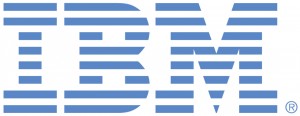According to the World Health Organization, 25 percent of adults worldwide report having been physically abused as children. In the US alone, there are around 6 million child protective reports annually. Better tools are needed to prevent incidents of abuse and neglect and to improve the overall child welfare system.
Addressing this issue requires developing new strategies for the child welfare system as well as understanding and tacking the social determinants of child welfare.
However, child welfare professionals often have trouble managing and using all the information they need to do their jobs. Cognitive computing can provide a solution for many of the challenges these professionals face.
So what are some of the challenges that the child welfare system faces? Two major issues are constrained budgets and the opioid crisis. Most experts and children’s advocates agree that the latter is a substantial factor in the increase of children in foster care—after declining more than 20 percent from fiscal years 2005 and 2012, to a low of 397,000, the number of children in foster care rose sharply in 2013 and 2014, to a high of 415,000.
This increase has stretched agency resources to the limit. The Child Welfare League of America reported that the opioid epidemic and the subsequent spike of children in foster care coincide with decreases in funding for federal child welfare programs. Other issues exist also such as an increase in the number of children removed from their homes due to reported abuse or neglect, new Child Welfare Information System regulations, and outdated tools and processes.
These obstacles create serious challenges for child welfare professionals, but cognitive computing offers potential solutions. The new technology can perform tasks that have previously been considered uniquely human, such as understanding written or spoken language, recognizing and distinguishing patterns in order to predict specific outcomes, and learning and improving over time. Additionally, cognitive computing can perform these tasks at a scale not achievable by humans.
Child welfare professionals can gain valuable insights about the potential role of cognitive computing from other industries. For example, the healthcare industry has started taking notice of cognitive tools. Watson, IBM’s cognitive computing system, has partnered with the Cleveland Clinic and the Memorial Sloan Kettering clinic to help improve diagnosis and treatment strategies.
For example, Watson has been trained to understand medical language through journals, textbooks, and medical records. In addition, at the Cleveland Clinic, Watson learned from the practices of the most experienced and more effective medical personnel. Based on this knowledge, Watson’s cognitive abilities provided physicians at Cleveland Clinic with a list of options available to them at every step, ranked according to confidence of their likely success. Doctors and patients still made the final decision, but they had more information to support their decisions.
Cognitive computing provides a powerful set of tools that can help child welfare organizations address many of the challenges they face today; challenges like high caseloads, inexperienced staff, accessing important case information from case notes and other unstructured formats, and sharing information within and between organizations.
Still have more questions about how you can implement cognitive computing in the child welfare system? Join our interactive social cast on Thursday, June 23 at 2PM ET.
Daniel Stein, co-founder of the Stewards of Change Institute, Martin Duggan, Director of Social Programs of IBM Watson Health, and Lana Rees, Executive Director of the Office of Children and Youth of Erie County, Pennsylvania, will join GovLoop’s Chris Dorobek for an interactive socialcast to discuss how cognitive computing can shape the experiences of child welfare professionals and the children they work with.
Register for the socialcast here.






Leave a Reply
You must be logged in to post a comment.